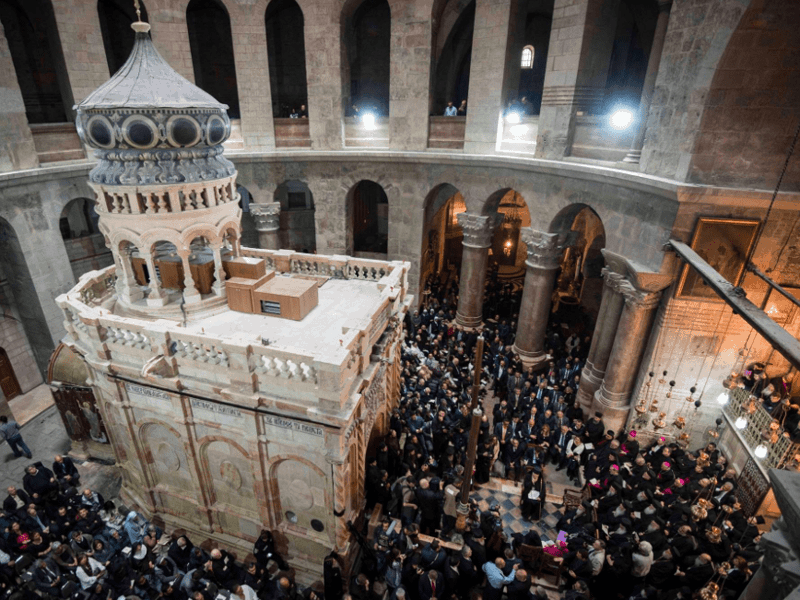The Greek Orthodox Patriarchate in the Holy Land says it will not assist with Israeli police orders to limit the number of people attending the Holy Fire ceremony a day before Easter Sunday, which this year falls on April 24 for the Eastern Orthodox Church.
In a statement released from the Greek Orthodox church, police are allowing only 1,000 people to enter the Church of the Holy Sepulcher on April 23, along with another 500 who can view the ceremony from outside the church.
“The Patriarchate believes that there is no justification for these additional unjust restrictions, and affirms its explicit, clear and complete rejection of all restrictions,” it says in a statement.
“The Patriarchate is fed up with police restrictions on freedom to worship and with its unacceptable methods of dealing with the God-given rights of Christians to practice rituals and have to access their holy sites in the Old City of Jerusalem.”
The church alleges that after many attempts to work with the police in the past, “promises were great and what actually took place on the ground was not even remotely close to those assurances.”
Orthodox tradition holds that the Holy Fire happens annually on the day preceding Orthodox Pascha (Orthodox Easter). During this time, blue light is said to emit within Jesus' tomb, rising from the marble slab covering the stone bed believed to be that upon which Jesus' body is to have been placed for burial.

The Church of the Holy Sepulcher is the most sacred site in the world for millions of Christians. This is the site of the crucifixion, burial and resurrection of Jesus.
The church was built during the 4th century by Emperor Constantine, who accepted Christianity and made it the official religion of the Roman Empire. His mother, Saint Helena, toured the Holy Land and identified the sites in which the events mentioned in the New Testament took place. Helena identified this place as the Calvary, where Jesus was crucified.

